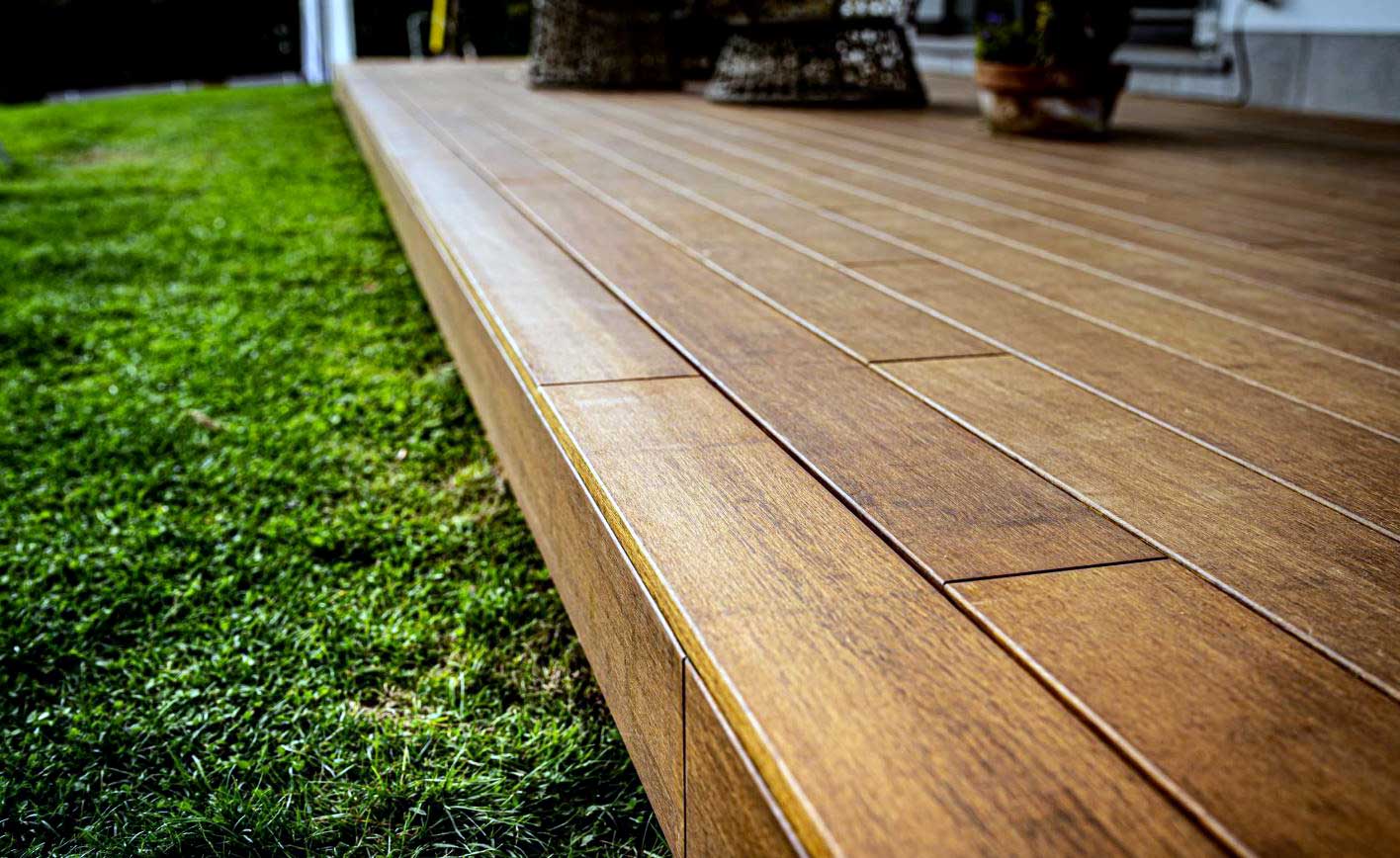Wood
Pros: The timeless appeal of natural beauty, warm underfoot, readily available in various species and colors, lends itself to customization.
Cons: Requires regular maintenance like staining and sealing, susceptible to rot, warping, and fading over time.
Ideal for: Creating a classic, warm ambiance, budget-conscious projects, those who enjoy DIY maintenance.
Popular Choices: Cedar (naturally resistant), redwood (durable and beautiful), pressure-treated lumber (affordable option).
Composite
Pros: Low maintenance, resists fading, rot, and insect damage, durable, comes in a wide variety of colors and styles to mimic wood grains.
Cons: Generally more expensive than wood, can feel hot in direct sunlight, some types are susceptible to scratching.
Ideal for: Busy lifestyles requiring minimal upkeep, matching specific design aesthetics, areas with moisture concerns.
Popular Choices: Trex (well-known brand), TimberTech (diverse product range), Azek (premium option).
PVC
Pros: Very low maintenance, waterproof, splinter-free, available in various colors and textures, offers slip resistance.
Cons: Can feel less natural than wood or composite, may fade slightly over time, not as eco-friendly as some options.
Ideal for: Decks around pools or water features, high-traffic areas requiring minimal maintenance, achieving specific textures or colors.
Popular Choices: EverNew (budget-friendly), Veranda (realistic wood looks), Fiberon (sustainable options).
Aluminum
Pros: Extremely durable, low maintenance, fire-resistant, lightweight, requires no staining or sealing.
Cons: Most expensive option, can feel cold underfoot, limited design options compared to other materials.
Ideal for: Decks on rooftops or balconies with weight restrictions, areas prone to fire hazards, modern and minimalist aesthetics.
Popular Choices: Trex Aluminum (combines beauty with strength), DuraDek (hidden fastener system), Alcoa Decking (high-quality construction).






